"This Infuriates Me": Women Say Pads And Tampons Have Been Getting Smaller, But There Might Be Something Else Going On
By now, you're probably familiar with the sneaky practice of shrinkflation, when products get smaller but the price stays the same. It's even gotten to the point that President Biden has called on Congress to pass a bill to stop shrinkflation once and for all.
Too many corporations raise their prices to pad their profits – charging you more and more for less and less. President Biden is calling on Congress to pass a bill ending shrinkflation. pic.twitter.com/sLoBNhD328
— The White House (@WhiteHouse) March 8, 2024
For example, perhaps you've noticed that a "pint" of your favorite ice cream is now only 14 ounces, or maybe it dawned on you that your "family size" box of cereal is suddenly more like "personal size."
Well, now people online are saying their pads and tampons have been getting smaller. And unlike shrinking snack foods, if our period products get smaller without warning, it can make us think something is going on with our health.
A variety of medical conditions can cause a heavier flow, ranging from hormonal imbalances to cancer. So it makes sense that people might get concerned and seek medical attention when they suddenly start going through period products faster than usual.
Recently, Melissa Simonsen, 39, has been going viral on TikTok for calling out period product shrinkflation. In a video that's been viewed over 2.1 million times, she says, "I'm calling you out, Tampax. These sizes that you normalized so that we all, as women, know about which ones we use for about which period of time during our periods. These are not accurate anymore because you shrunk them."

She continues, saying, "And women have actually sought doctor's appointments thinking something is wrong with their bodies because you did this and didn't tell anyone. Shame on you."
Melissa told BuzzFeed that she thought something was wrong when her period seemed to get heavier. She explained, "I started suspecting that something was amiss toward the end of last year. I was pregnant at the beginning of the year and unfortunately experienced a miscarriage, so for several months at the start of 2023, I hadn’t seen or used tampons."
When her period started again, Melissa still had tampons left over from an earlier bulk purchase. However, after she replenished her period supplies, she noticed that she was running through them much more quickly than she used to.
She said, "My initial thought (similar to so many in my comment section) was that MY body had changed after my miscarriage. That maybe there could even be something concerning about an increase in flow at my age, and I started worrying about early menopause and worrying whether we’d be able to get pregnant again if we tried."
Then she looked at one of her old tampons side by side with one of the new ones, and it all fell into place. She told BuzzFeed, "When I saw those two tampons side by side, I finally put together why R [regular] size had been so useless and why I had been using U [ultra} size when I never have even used that size before!"
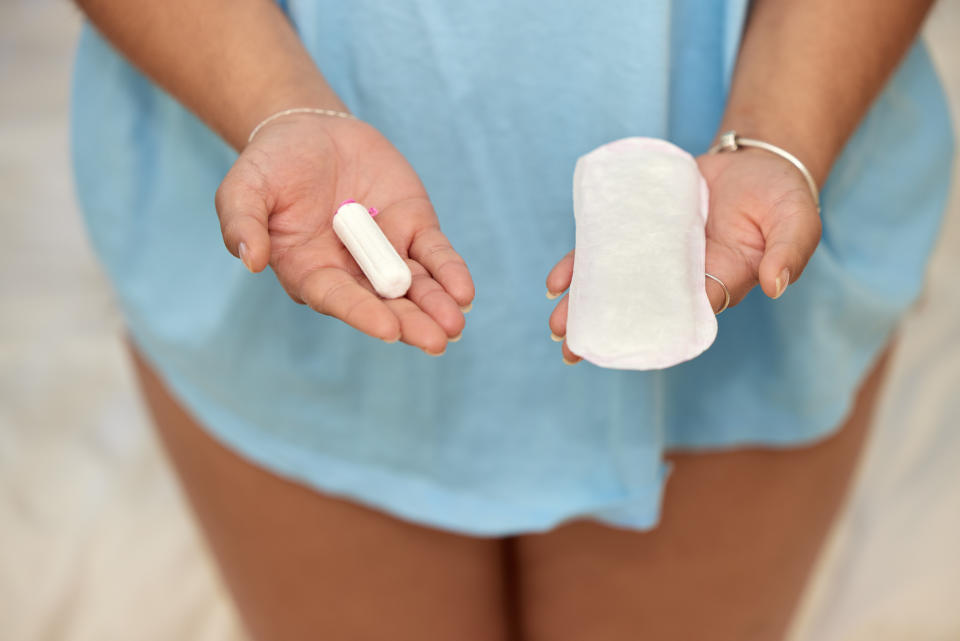
And she says it's not just tampons. Melissa told BuzzFeed, "I have noticed that pads are also smaller, just shaved off a little on all sides so they don’t fit inside your panties the way they used to, and the wings don’t extend as far. Some brands have changed the glue, so people are having trouble sticking it down anymore."
She went on to say, "These companies are there to sell a product and make money, and there’s nothing wrong with that. But shrinkflation and skimpflation with no transparency or even acknowledgment from the companies about changing size makes people question themselves and their bodies, even thinking they’re going crazy, doubting their own memories and experiences! It’s not right."
In the comments of her viral video, people are discussing differences they've noticed in their period products:

People also called out pads getting smaller and less sticky:

And some chimed in, annoyed that their usual box of period products contains fewer tampons than it used to, another common shrinkflation tactic:

Some commenters shared that they've seen doctors because they were concerned about what appeared to be a heavier flow. Some said they'd changed their birth control prescriptions, and one commenter mentioned having an IUD placed due to the bleeding (which, in case you don't know, can be extremely painful).

And others shouted out their favorite reusable period products:

People aren't just talking about changes to period products on TikTok. On Reddit, one user posted this photo of two regular-sized tampons manufactured a year apart, in which the newer one appears to be slightly smaller:
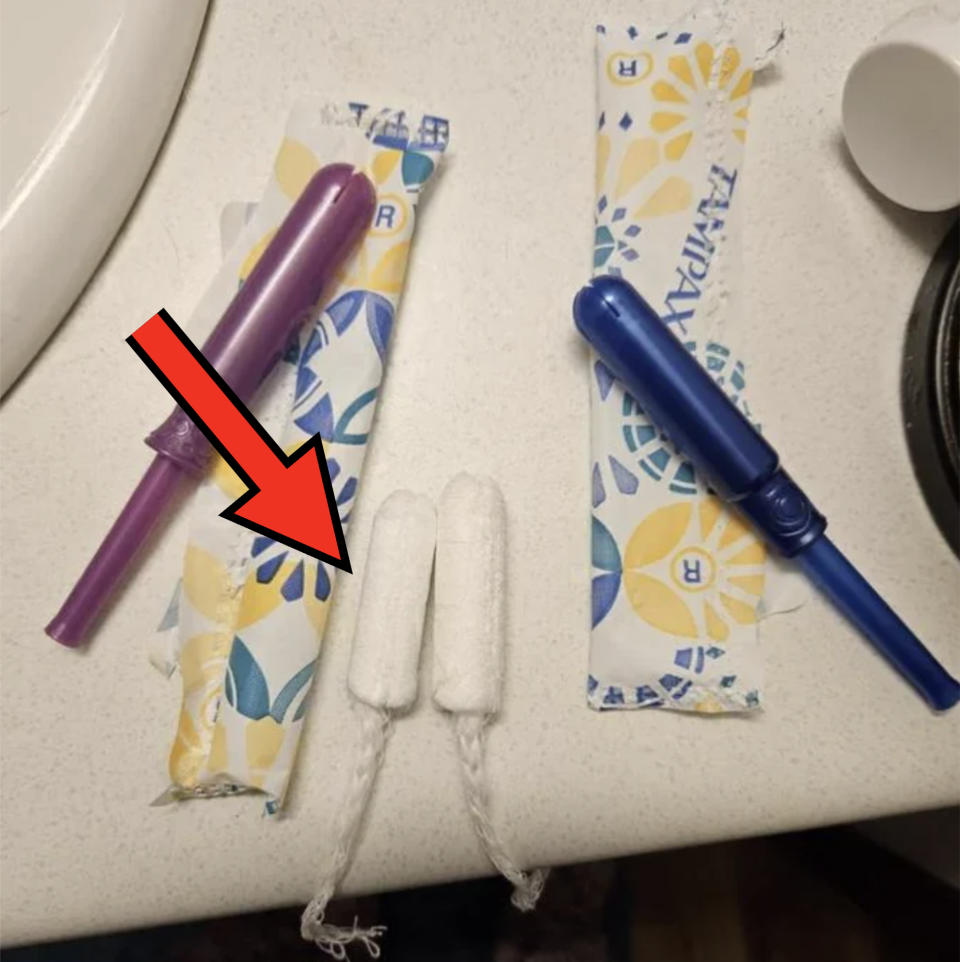
One commenter wrote, "That's some bullshit. I can't believe they are shrinking tampons. I have adenomyosis, and I bleed heavily. The ultras already only last an hour. I hope they realize women will just opt to be on birth control continuously to halt the period rather than bleeding out because there isn't enough there to catch it all as before. This infuriates me."
Another user shared that their usual tampons now come with four fewer items in each box, writing, "Tampons from two years ago vs. now."

One commenter replied, "I've noticed that the actual tampon quality has decreased. They are manufactured more cheaply, and they seem to leak now."
Another Reddit user shared this photo of two pads, writing, "New vs old Always maxi pad design. The opaque part is the part that actually soaks stuff up."
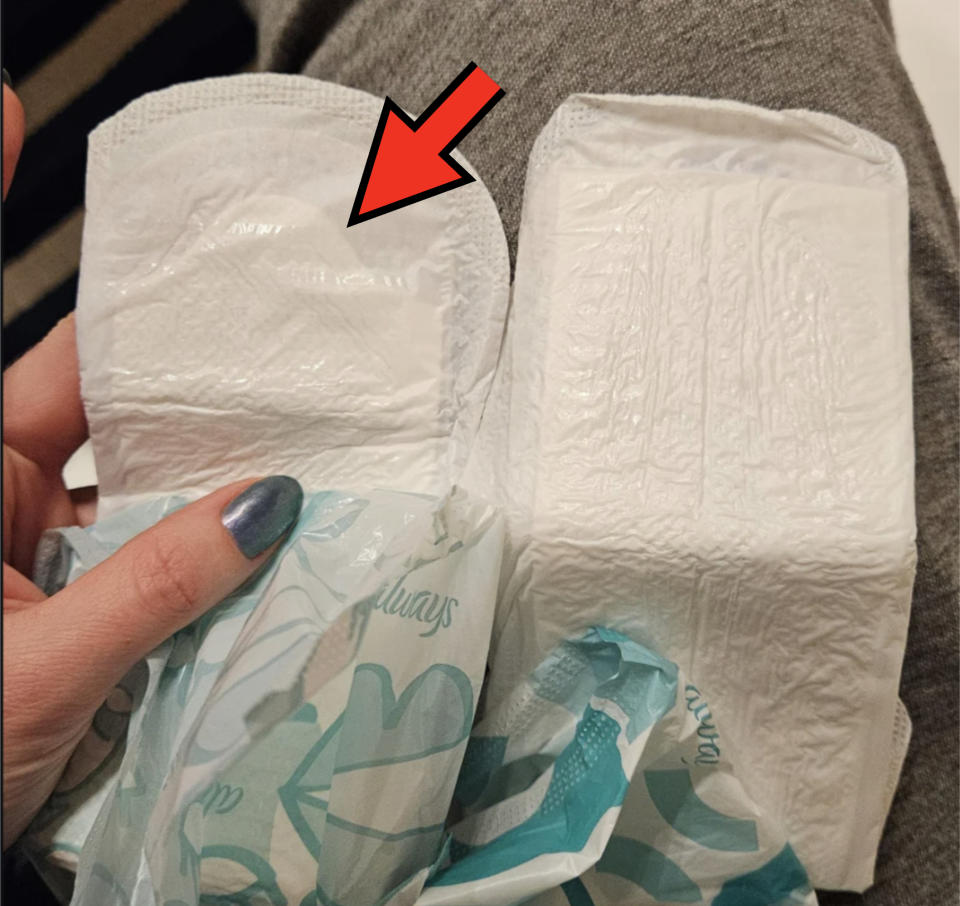
One commenter responded, "Man, this shrinkflation is hitting everywhere. I would have never thought to look at my pads!"
After seeing all these claims about changes to period products, I reached out to Procter & Gamble, the parent company behind the popular Tampax and Always brands to find out if they've made changes to their products. A spokesperson for P&G told BuzzFeed, "No, we have not changed the sizes for Always and Tampax. Our pads are available in multiple absorbencies designed to fit different needs, body types, and flows."
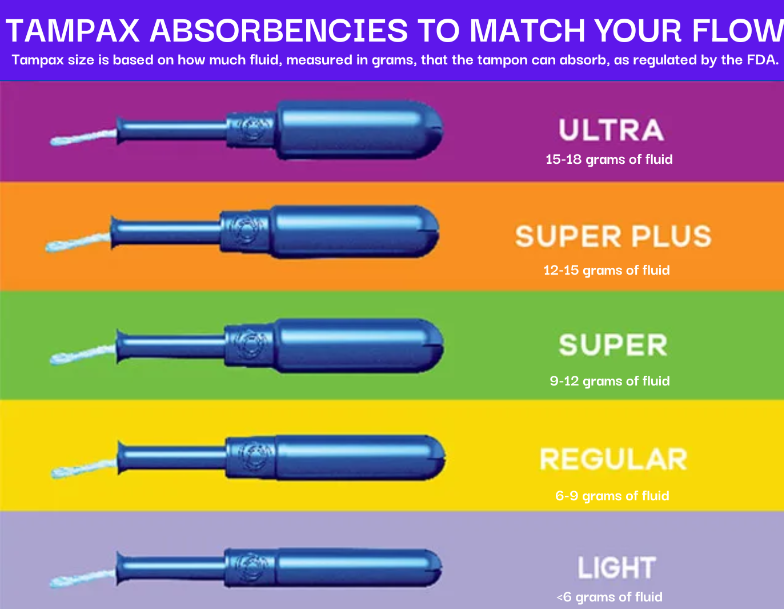
They went on to say, "Tampons are regulated by the US Food and Drug Administration (FDA) and adhere to industry absorbency or size ranges as listed on the side of each package. The FDA absorbency ranges have not changed since its introduction more than 30 years ago."
It's reassuring to know that tampon absorbency is dictated by the FDA, so companies can't go shrinking tampons willy-nilly. But if period products haven't shrunk, why are so many people saying that they're going through more tampons than they used to? It's possible that some of these people may actually be experiencing a heavier flow. If you notice changes in your period, especially if they're accompanied by other symptoms like pain, fatigue, or blood clots the size of a quarter or larger, it's a good idea to make an appointment with your gyno.
It's also possible that people noticing changes in their period products are comparing slightly different products from the same manufacturer. With so many choices on store shelves, it's easy to grab the wrong box. As someone who gets a bit absentminded at the grocery store, I've done this more times than I care to admit.
But there's another factor that can't be ignored. Traditionally, we haven't tested tampon absorbency with real blood, so the absorbency data we've come to rely on doesn't accurately reflect how well a tampon works in real-world conditions.
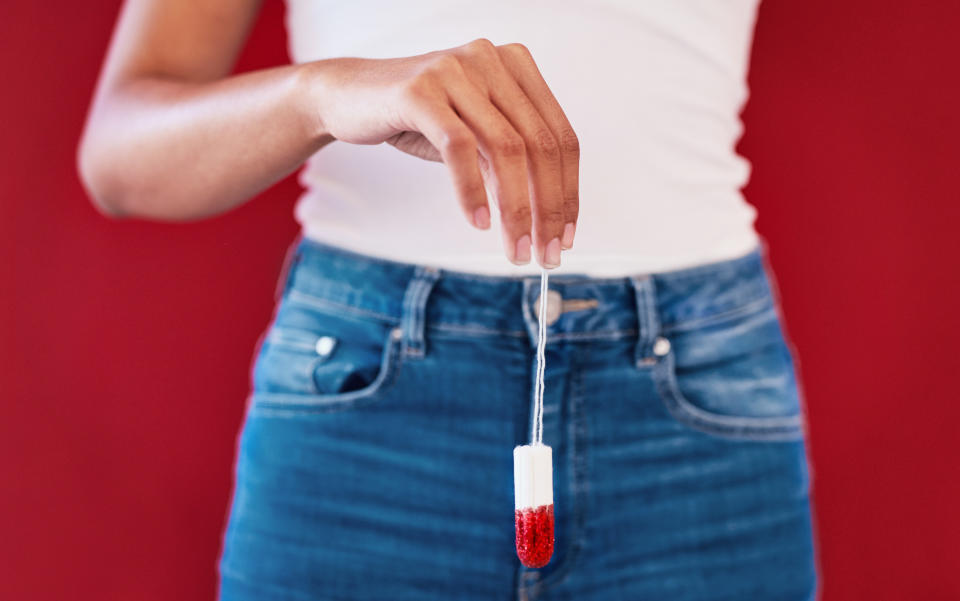
In August 2023, Scientific American reported on a paper that found that tampon absorbency numbers can be misleading because they're typically tested with a saline solution that's just slightly thicker than water.
When the same tampons were tested with real blood, researchers found they could hold much more or much less, depending on the brand and size. They tested 21 different period products and found that tampons of various sizes could hold a range between 20 and 34 ml of blood.
According to the study authors, this was the first known time tampon absorbency was tested with actual blood. The fact that tampons were invented in 1929 and it took until 2023 for researchers to test them with actual blood says a lot about how period stigma has hurt our understanding of women's health. Hopefully, this study is a step toward period products that better reflect how much blood we lose each month.
And in the meantime, for anyone interested in studying their own cycle, it seems like using a menstrual cup or disc would be the most straightforward way to measure their flow.

